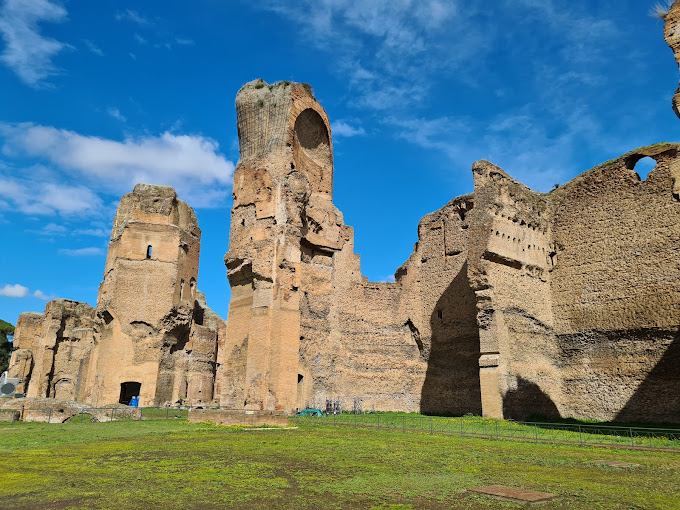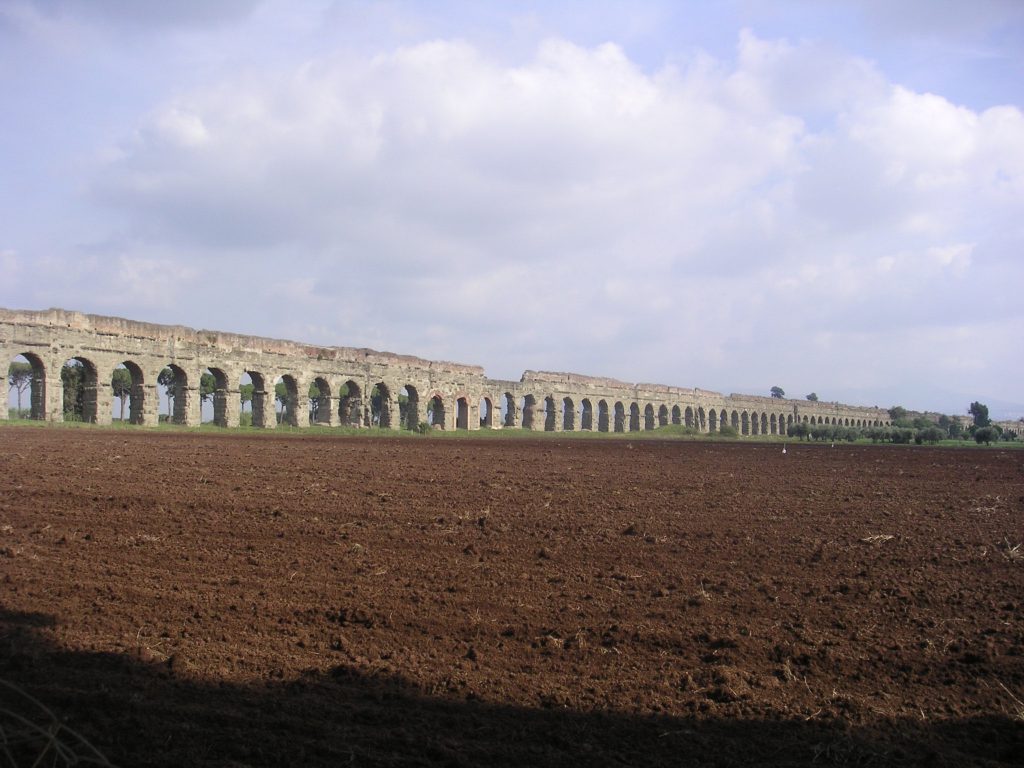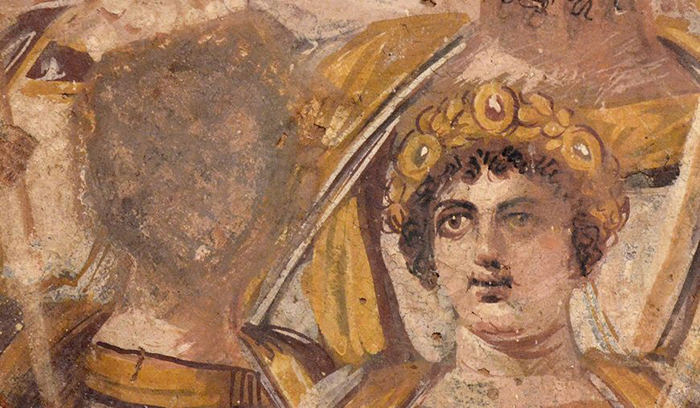It’s been said that Rome will exist as long as its ruins do; when the last brick tumbles so will the world. With this alarming thought, we booked a tour on the Archeobus in Rome, a hop-on hop-off tour which would take us outside the city walls to the ruins which lie on the outskirts of the Seven Hills on which the ancient city was built. They mark the ancient boundaries of the city.

We passed The Domus Augustana and The Palatine Hill which is home to majestic ruins several levels above ground level. Up close they are even more awe-inspiring than they appear at a distance. We passed the aqueducts towering over the roads. One, the Acqua Virgo, built in 19 BC by Marcus Agrippa, is still functioning today and actually supplies water to the Trevi Fountain.

We stopped at several ruins strewn across the foothills of Rome, built for the optimal views and probably safety as invasions were rife and came from every direction. Rome was constantly under threat. Everyone wanted it!
And then in front of us the ruins of the Caracalla Baths towered into the blue sky. Vines clinging to stately porticos and creeping into crevices seemed to be binding time with memories; hiding intricate engravings and in some places, actually holding the brickwork together with ancient trunks and arms.

Caracalla built these colossal baths, one of his principal achievements. Formally known as Marcus Aurelius Antoninus, he was Roman emperor around 200 AD. We were enthralled by his vision and ability to gather the resources and power to initiate this impressive bath complex. It covered 33 acres and could hold over 1600 bathers at any time. Caracalla must have been a great emperor. A kind and benevolent man for sure.

Well, evidently not. He is regarded as one of the most bloodthirsty tyrants in Roman history and probably did not build the baths for the well-being of the community but to create and leave a name for himself. He was an evil tyrant who wanted to kill his father and eventually did kill his younger brother, Geta, as Geta tried to hide in his mother’s arms.
Not surprisingly he was assassinated. When he died, Caracalla was erased! As he had cancelled Geta. Cancelled! Cancelling people might seem to be a modern trend but the Romans did it in ancient times. But they probably did it more thoroughly and permanently than the cancel culture of social media does. However, they did wait until the person was dead.
In ancient Rome, the practice of damnatio memoriae (condemnation of memory) was the condemnation of emperors after their deaths. If the Senate or a later emperor did not like the acts of an emperor, they could have his property seized, his name erased and his statues reworked or defaced. This happened to Caracalla, and all images of him including statues and even coins bearing his face were destroyed.

Thankfully we didn’t know this about Caracalla while we wandered in the shade of the lofty stone structures feeling as Goethe must have when he sauntered – Goethe always seem to saunter – through Europe on his travels, often resting wistfully on a chaise admiring the scenery.
His words resonated, “Yes, I have finally arrived to this Capital of the World! I now see all the dreams of my youth coming to life … Only in Rome is it possible to understand Rome.”
We felt small but enriched standing in the memories of the great empire; inspired and keen to know and understand Rome as Goethe had. A campari soda with sputini, sipped in a sidewalk cafe amid marble statues quenched some of our thirst. The thirst to know this eternal city was a challenge that we have embraced.
